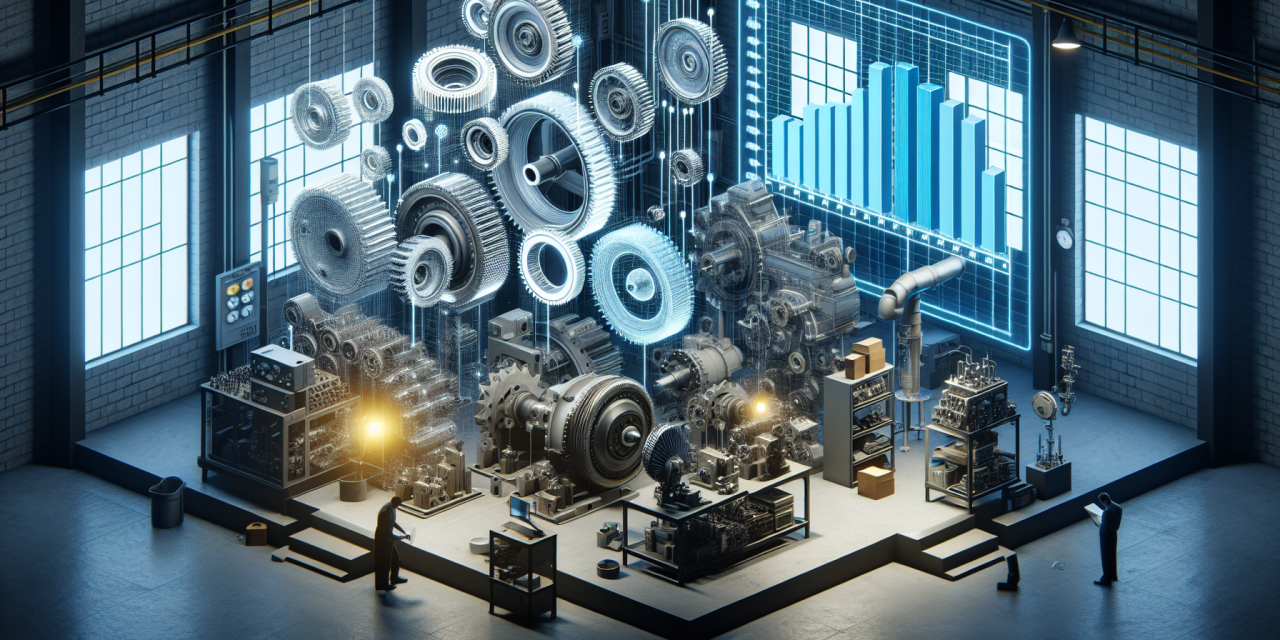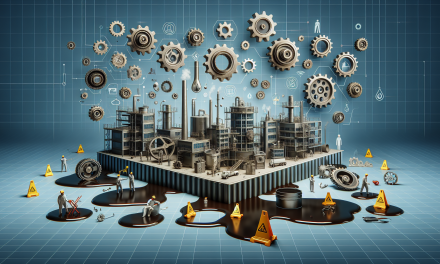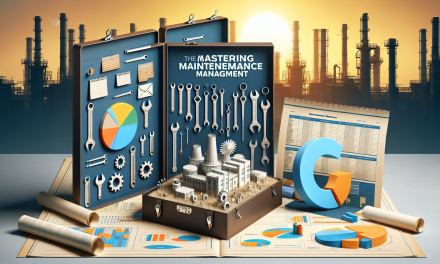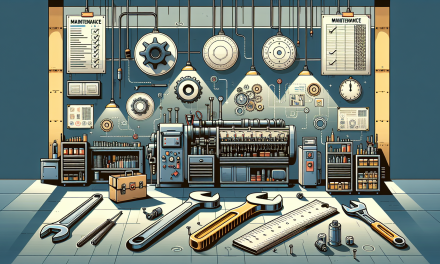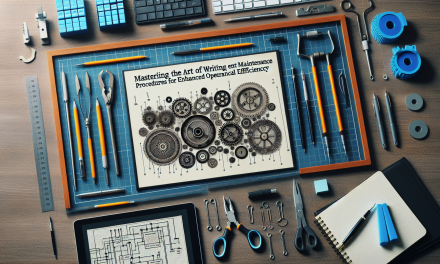Table of Contents
- Introduction
- Understanding Maintenance and Replacement
- Importance of Optimization
- Techniques for Optimization
- Data-Driven Decisions
- Cost-Benefit Analysis
- Technology in Maintenance
- Training and Awareness
- Frequently Asked Questions
- Conclusion
Introduction
When it comes to equipment maintenance and replacement decisions, companies face significant challenges that can impact their bottom line, operational efficiency, and overall productivity. Therefore, mastering the art of optimizing these decisions is crucial for success. In this blog post, we will delve into strategies and techniques that can enhance your approach to equipment maintenance and replacement, ensuring that you make informed, timely, and cost-effective decisions.
Understanding Maintenance and Replacement
Before diving into optimization techniques, it is essential to comprehend what equipment maintenance and replacement truly entail. Maintenance involves regular actions taken to prolong the operational life of machinery, while replacement refers to the act of swapping out equipment that can no longer deliver the required performance. Both processes are integral to effective asset management, ultimately ensuring that production runs smoothly and efficiently.
Types of Maintenance
Understanding the types of maintenance available will empower you to choose the best approach for your organization. Here are the main types:
- Preventive Maintenance: Regularly scheduled maintenance activities designed to prevent equipment failure.
- Predictive Maintenance: Utilizing condition-monitoring tools and techniques to predict equipment failures before they occur.
- Corrective Maintenance: Repairs made once equipment has failed, often leading to downtime and lost productivity.
- Condition-Based Maintenance: Performing maintenance when certain conditions indicate that equipment is at risk of failure.
Importance of Optimization
Optimization in equipment maintenance and replacement decisions is vital for several reasons:
- Cost Efficiency: By optimizing your maintenance strategies, you can significantly reduce costs associated with lengthy downtimes and unforeseen repairs.
- Extended Equipment Life: Properly managed maintenance can extend the lifespan of your equipment, ensuring a greater return on investment.
- Increased Productivity: Healthy machinery means increased operational efficiency and productivity, contributing directly to profitability.
- Safety: Regular maintenance and timely replacements minimize risks associated with equipment failure, enhancing workplace safety.
Techniques for Optimization
Now that we understand the significance of optimization, let’s explore practical techniques that investors and maintenance managers can use.
1. Implement a Maintenance Management System
Utilizing a maintenance management system (MMS) can help streamline processes, maintain accurate records, and provide valuable insights into equipment performance. Such systems support inventory management, scheduling maintenance activities, and tracking costs associated with maintenance and replacement.
2. Leverage Predictive Analytics
By employing predictive analytics technologies, your organization can analyze historical data to anticipate potential equipment failures. This proactive approach enables maintenance teams to act before problems escalate, ensuring that machinery operates smoothly. For more information on enhancing predictive maintenance, check out the unlocking the secrets of refractory applications inspection and maintenance.
3. Conduct Regular Inspections
Regular inspections of equipment can help identify issues early and maintain optimal performance levels. Inspections should be thorough and frequent enough to catch wear and tear before it leads to significant issues. To master effective inspection strategies, consider this resource on risk-based strategies for inspection and maintenance management.
Data-Driven Decisions
Making informed decisions is crucial when it comes to optimizing equipment maintenance and replacement. By utilizing data, organizations can identify patterns, trends, and potential issues that may require attention. Here’s how to leverage data effectively:
1. Collect and Analyze Data
Gathering data on equipment performance, maintenance history, and other relevant metrics can provide insights into the best times for maintenance and replacement. Consider utilizing software that helps aggregate this data for easy analysis.
2. Monitor Performance Metrics
Key performance indicators (KPIs) such as mean time between failures (MTBF) and mean time to repair (MTTR) can help track equipment performance and diagnose issues. Regularly monitoring these indicators fosters a proactive maintenance culture.
Cost-Benefit Analysis
Performing a thorough cost-benefit analysis can help determine whether it’s more cost-effective to maintain or replace a piece of equipment. Evaluate factors such as:
- Current repair costs versus replacement costs;
- Expected performance and lifespan of current equipment;
- Impact on productivity and efficiency;
- Availability of parts and service for aging equipment.
Technology in Maintenance
Emerging technologies can enhance your maintenance and replacement strategies. Various innovations such as IoT sensors, predictive analytics, and advanced maintenance software can contribute to optimization. To explore how technology improves operational efficiency, check out this resource on innovative maintenance technologies.
Training and Awareness
Investing in training and development for your maintenance team is crucial. Educatuing staff on the latest maintenance practices, technologies, and safety protocols can lead to improved efficiency and reduced human error. Here’s a valuable resource on mastering maintenance management strategies.
Promote a Culture of Continuous Improvement
Encouraging a culture that values proactive maintenance and decision-making can elevate your organization’s performance. Regular workshops, training sessions, and team-building activities can foster this environment.
Frequently Asked Questions
1. Why is optimizing equipment maintenance important?
Optimizing maintenance and replacement decisions helps reduce costs, extends equipment life, increases productivity, and promotes workplace safety.
2. What role do technologies play in maintenance optimization?
Technologies such as predictive analytics, IoT sensors, and maintenance management software streamline processes and improve decision-making in maintenance and replacement strategies.
3. How can I train my team to improve maintenance practices?
Investing in ongoing training and creating a culture of continuous improvement will help enhance maintenance strategies. Regular workshops and feedback sessions can also support this goal.
Conclusion
In conclusion, optimizing equipment maintenance and replacement decisions requires a strategic approach backed by data, technology, and ongoing employee training. By implementing the techniques discussed in this article, your organization can become more agile, efficient, and cost-effective. Remember, the more proactive you are in your maintenance strategy, the better you can safeguard your operations and ensure long-term success. For those looking to deepen their understanding further, consider checking out the Optimization Equipment Maintenance & Replacement Decisions Course for a comprehensive learning experience.

